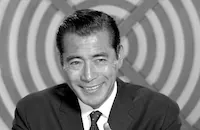Chushingura

Brief Synopsis
Cast & Crew
Hiroshi Inagaki
Koshiro Matsumoto
Yuzo Kayama
Chusha Ichikawa
Toshiro Mifune
Yoko Tsukasa
Film Details
Technical Specs

Synopsis
In March of 1701, the incorruptible young Lord Asano of Ako is appointed to receive and entertain imperial envoys calling on the shogun in Edo. Lord Kira, his supervisor, expects graft payments for every bit of advice, but Asano will have no part of bribery. Kira goads Asano beyond endurance, and the young lord finally draws his sword and wounds Kira. Asano is ordered to commit harakiri and his fief is forfeited. Chamberlain Oishi, Asano's chief retainer, calls a meeting of Asano's men, and they swear to avenge the injustice to their late master. To insure his family's safety, Oishi divorces his wife and sends her away with their children. Oishi then moves to Kyoto and descends to a life of debauchery to mislead Kira, who surrounds himself with bodyguards, fearing a vendetta. Twenty-one months later, after much spying on both sides, the group of 47 avengers acquire the plans of Kira's mansion, complete their plot, and attack. After decapitating Kira they march to Lord Asano's grave where the populace greets them as heroes. After deliberation, the sentence of death is passed on the 47 retainers, but in recognition of their loyalty to their lord and the approval of the populace, they are not executed like common criminals but are allowed to die by their own hands as befits true samurai.

Director

Hiroshi Inagaki
Cast
Koshiro Matsumoto
Yuzo Kayama
Chusha Ichikawa

Toshiro Mifune

Yoko Tsukasa

Setsuko Hara

Tatsuya Mihashi
Yosuke Natsuki
Ichiro Arishima
Norihei Miki
Frankie Sakai
Keiju Kobayashi
Yuriko Hoshi
Yumi Shirakawa
Kumi Mizuno

Akira Takarada

Takashi Shimura

Michiyo Aratama
Crew
Sanezumi Fujimoto
Akira Ifukube
Hiroshi Inagaki
Kisaku Ito
Teruo Maru
Kiyokata Seruwaka
Tomoyuki Tanaka
Herman G. Weinberg
Kazuo Yamada
Toshio Yazumi

Film Details
Technical Specs

Quotes
Trivia
Notes
Released in Japan in 1962 as a 2-part film; combined running time: 204 min. Rereleased in uncut version in 1966 by the Berkeley Cinema Guild. According to a U. S. source, film was subtitled 47 Samurai.

Miscellaneous Notes
Released in United States Fall October 3, 1963
Released in United States September 10, 1990
Re-released in United States 1966
Shown at Los Angeles Festival (Modern Masters of Japanese Cinema) September 10, 1990.
This is the 39th film adaptation of the Kabuki play which was first performed in Osaka in 1748. It was produced for the 30th anniversary of the creation of Toho Company.
Tohoscope
Re-released in United States 1966 (original version)
Released in United States September 10, 1990 (Shown at Los Angeles Festival (Modern Masters of Japanese Cinema) September 10, 1990.)
Released in United States Fall October 3, 1963











